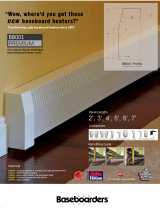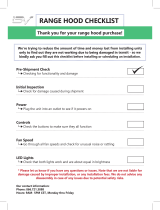
QR-25 Series Quincy Compressor
52201-107, December 2012 6 3501 Wismann Lane, Quincy IL - 62305-3116
for com pressed air. The idea is to create com pressed air on demand, but
to limit the number of times a motor must start the compressor in a given
time period. To prevent motor burnout, the motor should be limited to no
more than six (6) starts per hour.
Control Version P : Describes a basic compressor with no added control
features.
Control Version L : Consists of unloader tower(s)
*
located on the head of
the compres sor, a hydraulic unloader mounted on the bearing carrier, and a
pressure switch. This version is recommended for those applications where
the compressor will not be required to start more than six (6) times per
hour. A compressor equipped with control Version L is sometimes referred
to as a “start/stop machine”
The pressure switch detects the demand for compressed air and allows
the unit to start. When the demand is satisfied, the unit stops.
The hydraulic unloader allows the com pres sor to start in an “unloaded”
state, that is, the compressor starts but does not begin to create compressed
air until oil pressure is established. The hydraulic unloader also guards
against excessive damage in the event of an oil pressure drop.
Control Version L Variation: A variation of Control Version L is illus-
trated in Fig. 2-3. It shows how a discharge line check valve, pressure
switch, & pressure relief valve are combined to provide start/stop operation.
Control Version S : This version is best suited for “continuous run” ap-
plications (whenever the compressor must start more than six [6] times
per hour). If the demand for compressed air is continuous and exceeds one
half or more of the compressor’s capacity, Control Version S should be used.
Once the compressor is started, it continues to run until it is manually
turned off. Whenever there is a demand for compressed air, the pilot valve
closes, allowing the un loader in the unloader tower to actuate. At this point,
the compressor starts making com pressed air. As soon as the demand for
com pressed air is met, the pilot valve opens, al lowing air pressure to de-
actuate in the un loader tower. The compressor continues to run but does
not compress air.
Control Version LS: This version consists of a head assembly with un-
loader tower(s)* a pilot valve and a hydraulic unloader. It is usually applied
to gas or diesel engine driven units. Virtually the same as Control Version
S, but with a hydraulic unloader added to protect the compressor in the
event of an oil pressure drop.
Control Version LVD: Unloader tower(s)*, a pilot valve with a manual shut-
off, a hy draulic unloader, a check valve assembly, and a pressure switch make
up the LVD Control Version. This version is recom mended wherever the degree
of demand and usage is variable.
FROM THE
AIR RECEIVER
HYDRAULIC
UNLOADER
Pix 1069
UNLOADER TOWERS
Fig. 2-2 Control Version L
Pix 1069
AUTOMATIC
PRESSURE
SWITCH
CHECK
VALVE
TO
AIR
RECEIVER
Pix 1155
PRESSURE
RELIEF
VALVE
Pix 1155
Fig. 2-3 Control Version L Vari-
ation (Discharge Line Check
Valve & Pressure Switch)
UNLOADER TOWERS
UNLOADER PILOT
(110832 series)
Pix 1071
CONNECT TO
AIR RECEIVER
WITH A MINIMUM
OF 3/8" O.D.
COPPER TUBING.
Pix 1071
Fig. 2-4 Control Version S
*1, 2, or 4 unloader towers are employed depending upon the model of compressor.

























